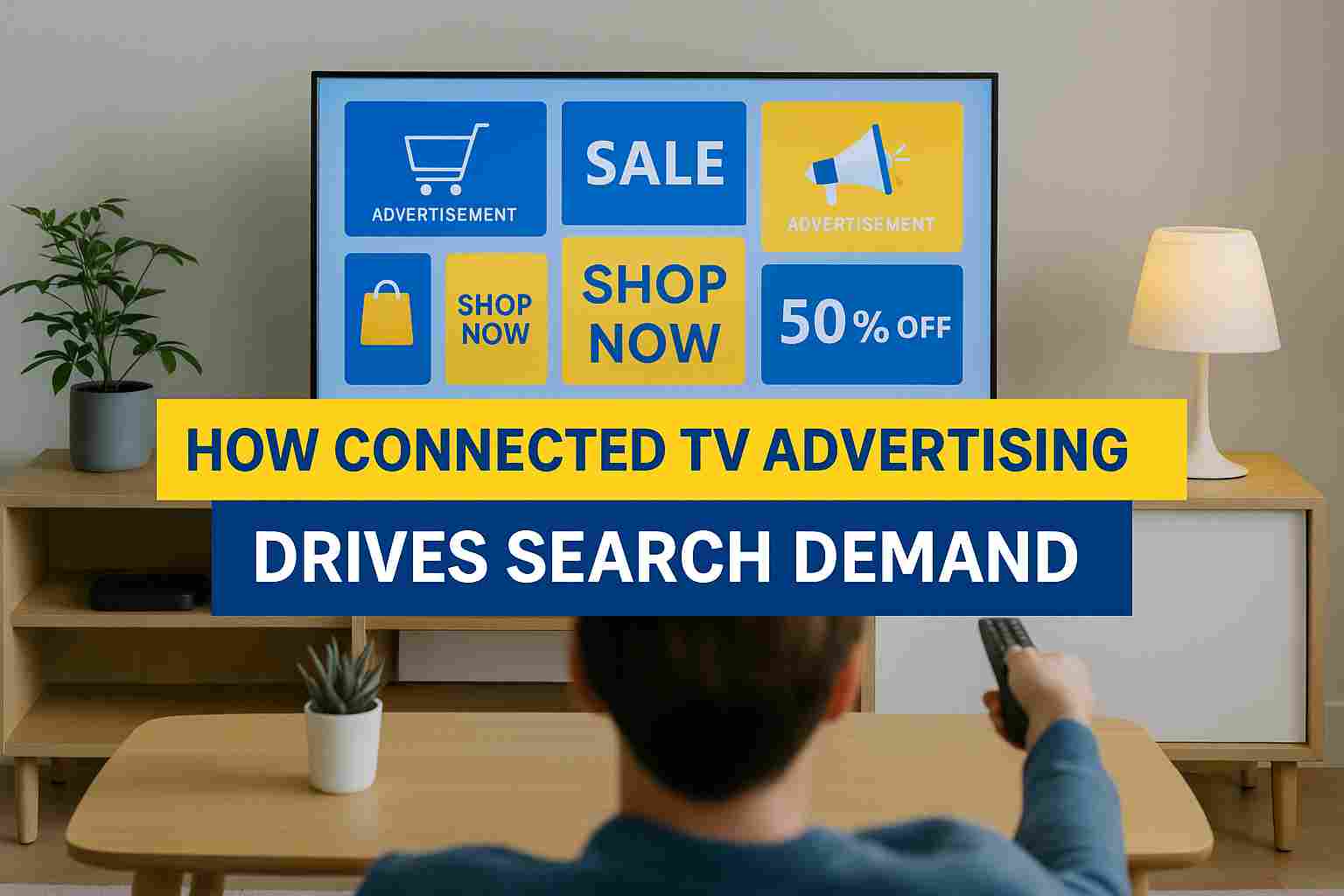Introduction
Have you ever noticed that after they watch an ad on their smart TV, suddenly consumers begin rushing to buy the product? Of course, it was not just an accident: CTV Advertising generates search demand. It is a multitasking audience that screens everything in this streaming-first world so that one good commercial might put out a search urge in one’s mind to do a review and finally purchase.
As streaming platforms rise into heights never seen before, in front of even seeing candidate audiences open a search engine, CTV advertising has become a major parameter of choice for advertisers. Let’s take a look at how this happens and how your brand could use CTV to spark some much-needed search intent.
Connected TV Advertising: What Is It? Why Now?
Connected TV advertising simply means video ads that run on internet-connected televisions using applications like YouTube, Hotstar, Netflix, or Prime Video. Unlike normal television advertisements that are broadcast to everyone, CTV provides very fine targeting options based on location or behavior and interest.
It is wonderful for creating search demand because the ad targets people who are already likely to search for the product online.
How does CTV advertising create demand for search?
Whenever someone is being served with a CTV ad, the person might not click or act immediately-but if the product or brand name springs into mind later on, there is a good chance that the person is going to search for it. So, this creates a bridge between CTV exposure and search intent.
Here is how that happens:
– Brand-awareness lift: Repetition on a big screen builds familiarity
– Relevance through targeting: A targeted ad feels more relatable
Cross-screen behavior: The viewer will use Cues and then head over to the phone for a quick search.
Memory trigger: An excellent ad with memorable visuals or slogans helps fix your brand in the more abstract recollections of the minds of people.
Attribution and insights: The data reveals an increase in searches after a CTV campaign has been run.
If the search marketing campaigns are working for you, CTV would simply balance the awareness versus intent presented. You can read our post “Why AI Still Runs on Search and SEO Still Runs the Show” on the iTech Manthra Blog to understand why search continues to be the core of new-age marketing.
How to Develop a CTV Advertising Strategy to Drive Search Demand
The working formula for campaigns is:
Set clear objectives- Are you asking for awareness, search intent, or conversions?
Define your audience- Use first-party data as well as behavioral data to ensure precise targeting!
Create memorable creative- Say your brand name, then build a little curiosity to trigger a search!
Search campaigns integration – Follow up with CTV viewers using Google Ads or SEO content!
Track performance – Branded search lift, organic traffic, and even conversions after view must all be recorded.
Optimization- Keep switching creative and targeting according to search volume trends.
Common Lose Mistakes in CTV Advertising
Some of these are upgrades even marketers forget:
No engagement follow-up with search tracking-there is no measure of success.
Poor creative recall. People forget to search for the brand if it is not loudly stated in the ad.
Target too broad. CTV should be data-driven–random can never be enough.
One-channel approach. CTV really does best in a pairing with search, social, and display.
Looking for direct conversions. CTV creates demand; search captures it.
Expert Take
Just as one senior marketing strategist puts it, “Connected TV is no longer at the-vit-mainstream-funnel-luxury; it is the spark of curiosity-and that curiosity drives search.”
Or, to explain types of CTV and search combinations: reach plus measurable intent-or footprints that TV never could have been able to provide.
FAQ
Q1: How is connected TV advertising different from YouTube Ads?
Connected TV ads operate on large-screen televisions within streaming applications, while YouTube ads cover the landscape of mobile and desktop users.
Q2. How do I rate the impact of CTV on search demand?
Check branded search volume, Google Search Console queries, and post-view traffic increases during the campaigns.
Q3. Does CTV advertising work for small businesses?
Television advertising with colorful larger campaigns would spend billions, and now there are many alternatives, but low-budget advertising campaigns highly targeted to local or niche audience.
Q4. How long after a CTV campaign does search demand arise?
Usually, it is a few days to a week, from the moment of reach, frequency, and recall of the creative.
Q5: Would you A/B test with a CTV campaign or on search?
First and foremost, CTV will pique curiosity-Search, on the other hand, turns interest into conversion.
Conclusion
The future of digital marketing is not about choosing between CTV or search but about combining both. Connected TV advertising raises awareness, while search marketing captures demand. Together they complete your marketing funnel.
Dive further into paid versus organic marketing by checking out our guide, “How to Know If Your GEO Is Working” at the iTech Manthra Blog
